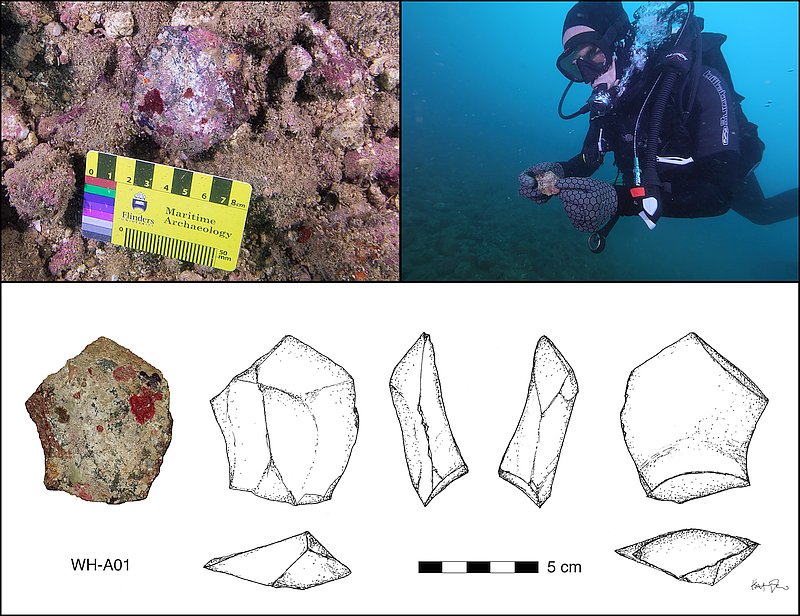Aboriginal seabed archaeological sites

An Ice Age lasting around 500–700 years occurred directly after, and as a result of, Noah’s Flood, some 4,500 years ago. During this time sea levels were much lower as water was stored as ice, kilometres thick, on top of land masses. At the peak of the Ice Age, sea levels could have been as much as 130 metres lower. Two million km2 of continental shelf around Australia would have been exposed during this period, increasing its land area by a third.
These exposed patches included land bridges connecting the Australian mainland to both Tasmania and New Guinea. The Aboriginal people group arrived in Australia during the Ice Age and would have had access to these now submerged areas of land. Some of them would have occupied sites on the then shoreline that are of course now under water.
For three years a group of archaeologists have been exploring off the Australian coast at depths of up to 20 metres looking to locate evidence of settlements on previously exposed areas of the sea floor. The team identified two sites located off the Murujuga coastline in north-western Australia: “Cape Bruguieres, comprising of [more than] 260 recorded lithic [stone] artefacts at depths down to −2.4 m below sea level, and Flying Foam Passage where the find spot is associated with a submerged freshwater spring at −14 m.”

It comes as no surprise to find confirmation that as people groups split off after the Tower of Babel, they used those exposed Ice Age land bridges to migrate across the globe. Some such migrating people lived, even if for a short time, on land which was then engulfed by the rising water level as the Ice Age subsided.
- Benjamin, J. and 16 others, Aboriginal artefacts on the continental shelf reveal ancient drowned cultural landscapes in northwest Australia, PLoS ONE 15(7): e0233912, 1 Jul 2020.
- Wright, S., In a first discovery of its kind, researchers have uncovered an ancient Aboriginal archaeological site preserved on the seabed, theconversation.com, 1 Jul 2020.


Readers’ comments
Comments are automatically closed 14 days after publication.